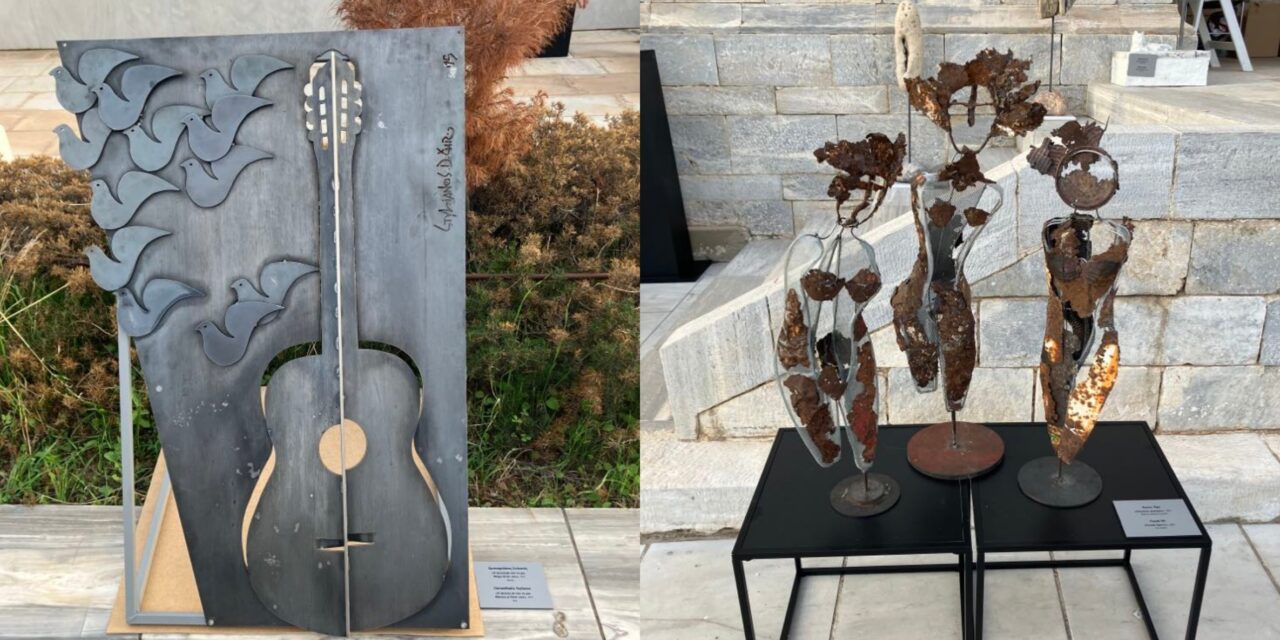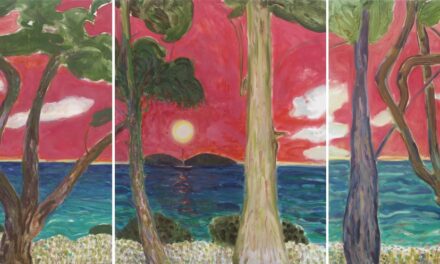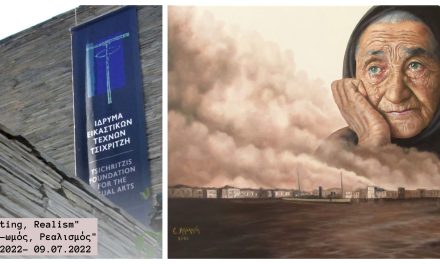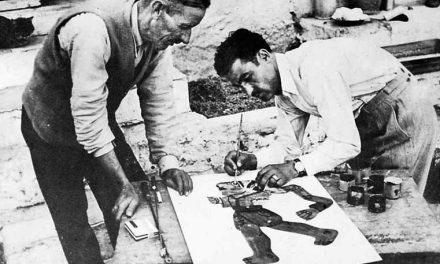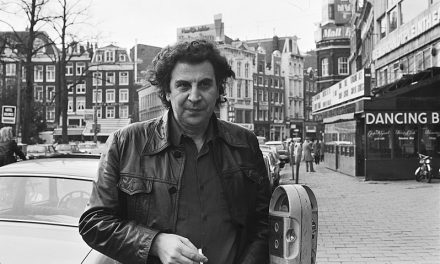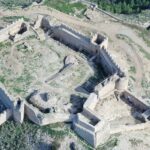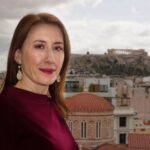In one of the city’s most beautiful gardens, a unique sculpture exhibition is being presented to the public. The Byzantine and Christian Museum hosts, for the sixth consecutive year, the Chamber of Fine Arts of Greece (EETE) Exhibition, an artistic event consisting of 100 medium and large-scale sculptures.
At the museum’s charming gardens, the public is introduced to some of the best that modern Greek sculpture has to offer. The public has the opportunity to interact with the artists while admiring the artworks’ full aesthetic potential within the public space, their natural environment.
Greek News Agenda* spoke with the President of the Chamber, painter, Nassos Chalkides and the Curator of the Sculpture Committee, sculptor Antonis Myrodias.
How was the idea for the collaboration with the Byzantine Museum born?
A.M. The cooperation with the Byzantine Museum started from a “misfortune” I would say. In 2017, EETE organized an excellent exhibition of micro-sculpture in the beautiful garden of the Museum of Political Exiles of Ai Stratis in Kerameikos. Its great success prompted us to repeat it the following year, but unfortunately, that was not possible. Following strong demands from the artists and in consultation with the Ministry of Culture, we were given the courtyard of the Byzantine Museum.
The first year’s great success in this new space with small-scale works sealed its continuation in the future, even during the pandemic, when no art space was accessible. I need to point out that the Museum’s management embraced the Exhibition and supported its repetition: the works were made larger to “cooperate” with the space, as well as the duration of the exhibition.
What really grew was the number of visitors. The public warmly welcomed the exhibit, embraced it with enthusiasm and is looking forward to it every year! I also need to acknowledge the Museum’s staff support and its instrumental role in this effort.
An important aspect of this Exhibition, beyond its entertaining role, is its pedagogical and educational function: visits are organized by schools, art schools, and groups from different environments and age categories, who have the opportunity to be guided through the exhibit by our members’ exhibitors and interact with artworks and artists.
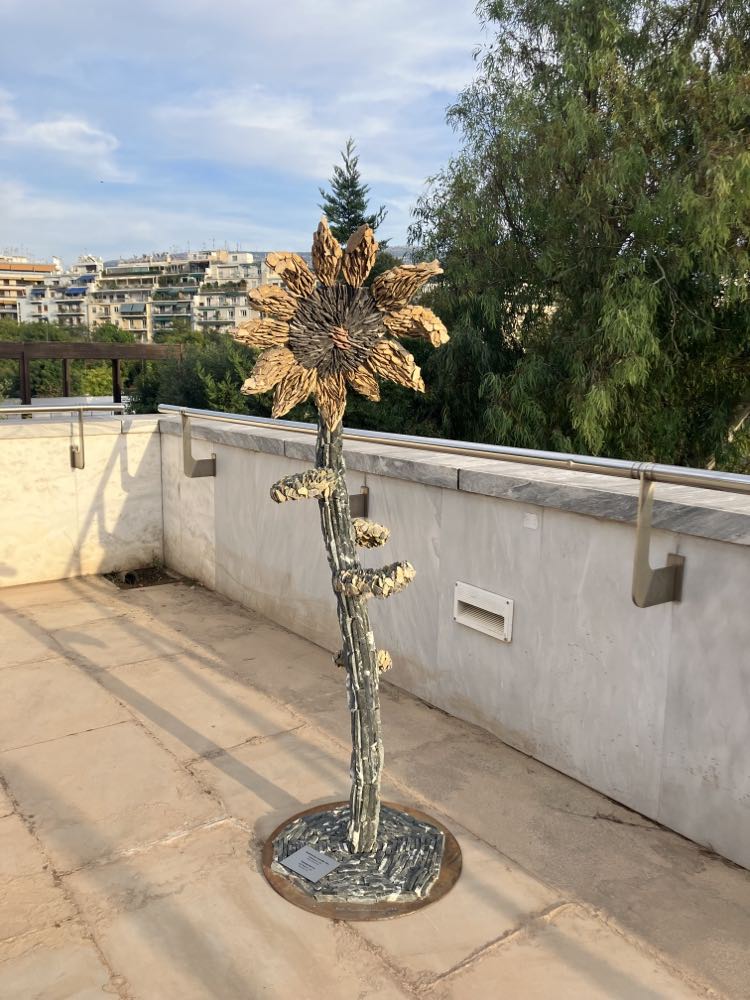
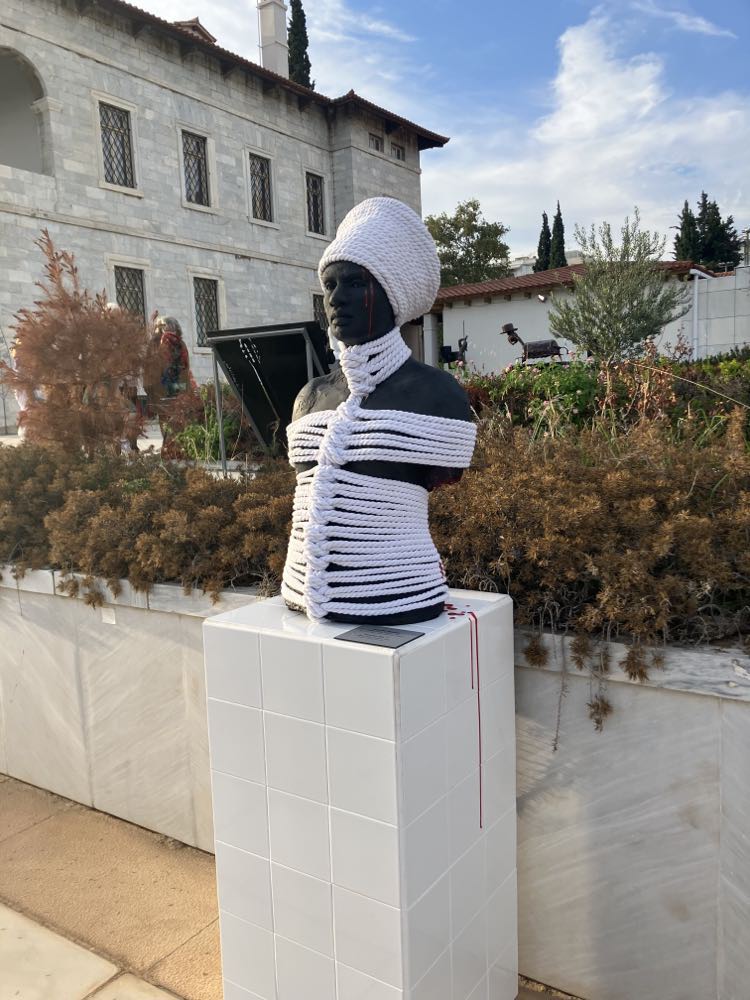
How many works are on display and how were they selected?
A.M. A total of 100 works by 83 artists are on display. The theme is free, which allows our artists to create without constraints and limits, according to their personal style.
The event, the result of a coordinated mobilization of the Ephorate of Sculpture with the Board of Directors of the EETE, is held with an open invitation to all members of the Chamber.
Applying the principles of equality and active general participation, the elected Classification and Jury Committee selects at least one work from each artist who submits a proposal.
The result fully justifies this selection process. At first glance, the viewer realizes that all contemporary artistic production trends coexist: works that are naturalistic, and figurative, works with abstract elements that incorporate experimentation from the last century to this day, and works that are symbolic, conceptual, and playful.
It is a feast of materials, colors, and intentions that, on one hand, portrays the artist-creator, reveals his intentions, diffuses a part of his personal world into the public sphere, and on the other hand, gives the viewer the impetus, the inspiration, the motivation to unfold his own thoughts, to achieve his own mental uplift. One hundred works are in dialogue with each other, with the visitor, and with the natural environment, which is the predominant space from which they originate and to which they belong.
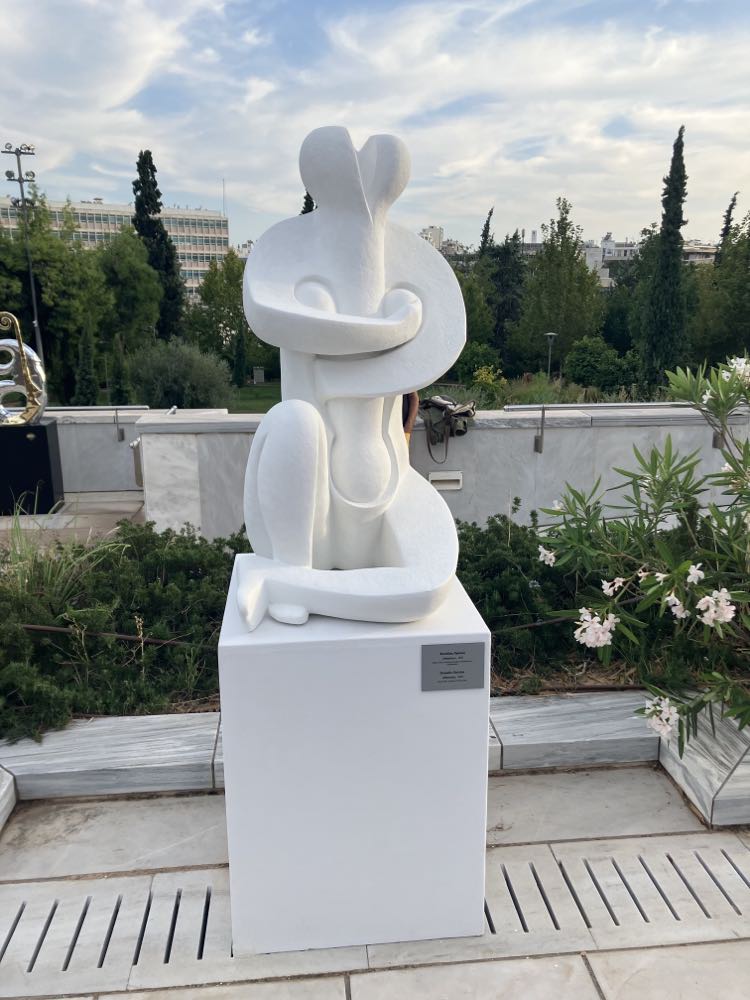
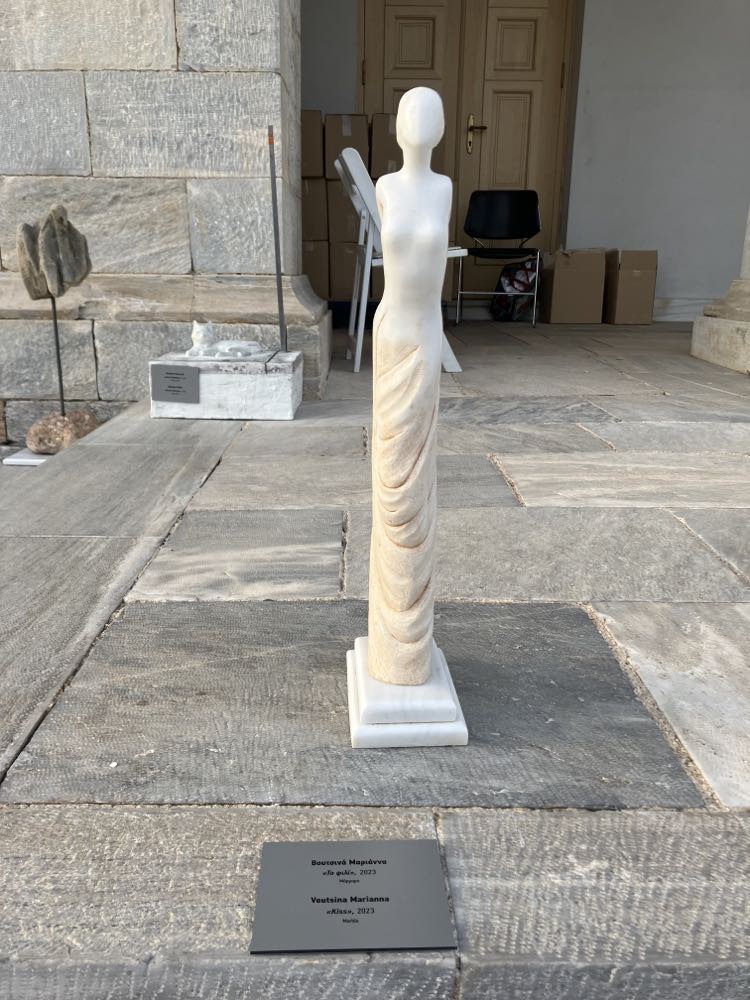
What is the relationship between the modern Greek and sculpture?
A.M.I could be talking for hours about this without drawing a clear conclusion. First of all, I believe that the Greek has a special connection and love for sculpture. I consider it “inscribed” in his psyche and long memory, something like environmental determinism: Created through the rocky aeolian formations of Milos and Santorini, the steep mountain peaks of Pindos, the early clay Neolithic forms at Vasilika and Makrigialos, the dry stone walls of Andros and the Kastropyrgos of Vathia, the folk stone reliefs and the stone troughs, this relationship is constantly confirmed and is what instinctively preserves his approach to sculptural art.
The fact that ancient Greek art carries a paramount weight for the modern Greek viewer as much as for the artist cannot be overlooked. Its use as a tourist product, and indeed in its speculative version, creates refractions that take it away from its symbolism and meaning.
It is recorded as an object, with specific formal characteristics and a superficial approach that removes any connotations it might reveal. Yet it remains, even through this distortion, as the Paradigm and the Measure for art today. The result is that this heavy legacy fails to yield the real gain that the viewer can reap: to be able to perceive the work as “signifying” and to decode the signified.
Furthermore, the epidemic of monumental imprinting of the previous century, peaking in the post-war period until recently, which is mainly attributed to historical reasons, may have yielded some special “fruits”, but, for the most part, it was applied in a repetitive manner that made the work of art an indispensable accessory of the urban public space, i.e. as common as a bench or a lamp in the square, acquiring the same significance and interest by the average viewer.
I have a typical example of what is happening today: in 2010, Christos Kapralos’ sculpture Mother with two Children, a work of great aesthetic and historical significance, was removed from the Rallou Manou Square (in the Russian Church, on Amalias Avenue). It was “lost” somewhere in the Rizareion park and its place in this central spot was taken a little later by an unsigned metal bright red balloon and the chain holding it, an example of postmodernism that gradually switched from the glossy architecture of the 2000s to sculpture. This case eloquently illustrates the way in which artwork in the public sphere is managed by officials.
Nevertheless, I am convinced, especially through the experience of this exhibition, that the viewer today, guided by an unmistakable instinct, has the ability to perceive sculpture with an empathetic attitude, to perceive sculptural art, to diagnose its sincerity and to weave his personal fairy tale using sculpture as his source of inspiration.
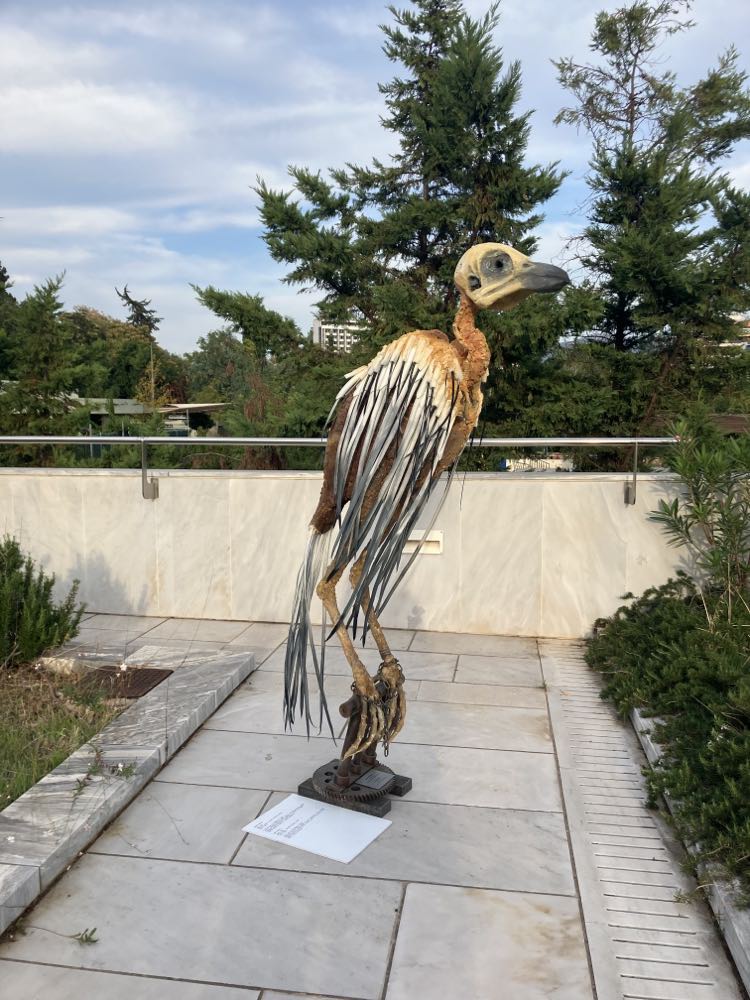
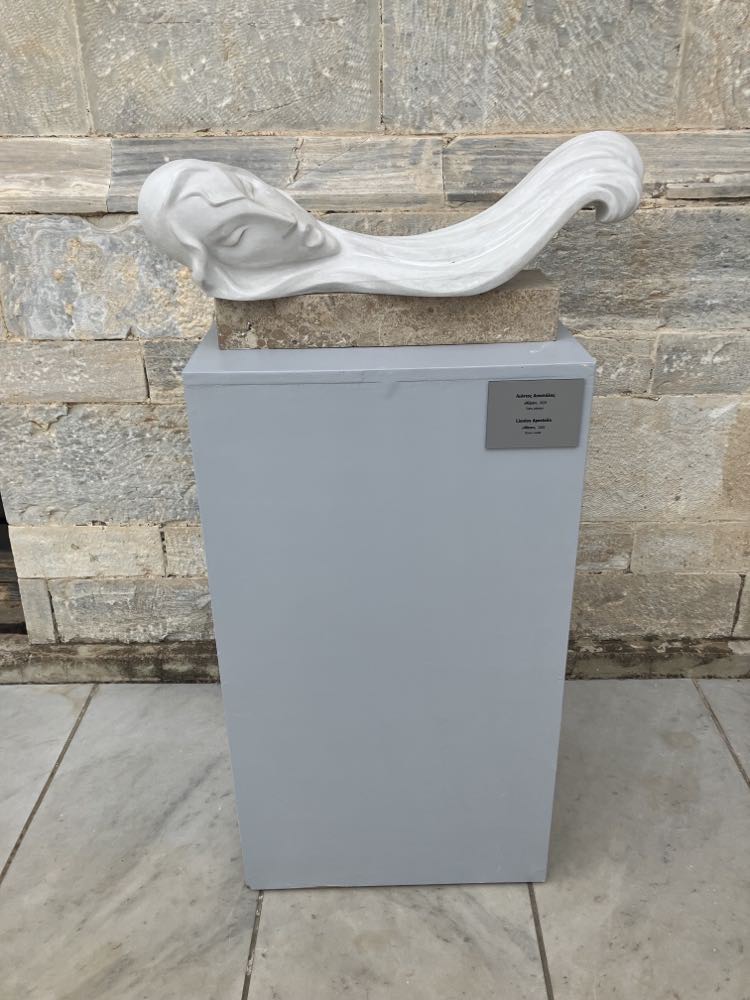
What are the challenges for the contemporary Greek artist? How often and in what way are they given the opportunity to exhibit in Greece and abroad?
N.C. We live in challenging times in many respects. Nowadays, the extraordinary possibilities, in technology, science, and productivity coupled with the inability of a large number of artists to make a living by doing their job, leads many of them to work in other fields. The stimuli and information create confusion and difficulty in identifying what is true and what is not. Human knowledge and art are treated as products rather than goods. As a result, the majority of people are deprived of them.
The production of many high-quality artworks and the inability to promote them in Greece and abroad, due to high costs borne by the artist, leads many artists to eventually give up.
A.M. Nowadays sculpture, like all forms of art, is constantly subjected to multiple challenges. Public space is often shaped bypassing the procedures that have been legislated aiming at the aesthetic upgrading and function of public space through artistic work, the pedagogical character of art, and entertainment – in its literal sense – through art.
Institutions such as organizing artistic competitions, the operation of advisory and jury committees, and feasibility committees at the central, local, and regional levels are often bypassed.
It is significant that the Law (Law 2557) passed in 1997, provided for the spending of 1% of the budget for the production and purchase of artworks in all public buildings, which could boost artistic production and enhance contemporary artistic creation and its relationship with the public, has never been implemented to date.
All this has a direct reflection in the space where we move daily, where creative expression, the meaning of the public artistic object, is not only weak, but often sacrificed in favor of postmodern phantasmagoria, a decorative trend, with emphasis on the surface, which lacks meaning.
At the same time, public space is being violently and rapidly ceded to private initiative, the central axis of which is its economic exploitation. Perhaps its recovery is one of the greatest challenges the art world is facing today.
Most artists are under intense pressure on a daily basis because of the stress caused by everyday adversities, unemployment, underemployment, the inability to access exhibition spaces and promote their work, and devaluation at a time when art institutions and spaces focus primarily on economic values.
Against this backdrop of exclusion, the Chamber’s actions, such as the present exhibition at the Byzantine Museum, give artists the opportunity to present their recent work, to get in contact with the public and to communicate their work.
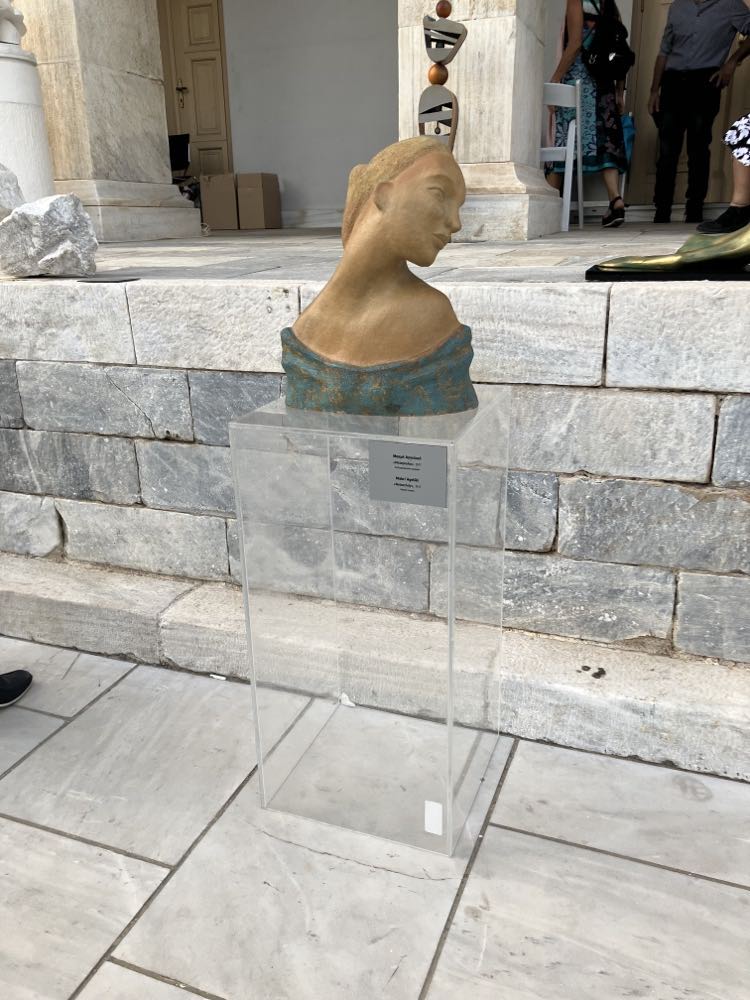
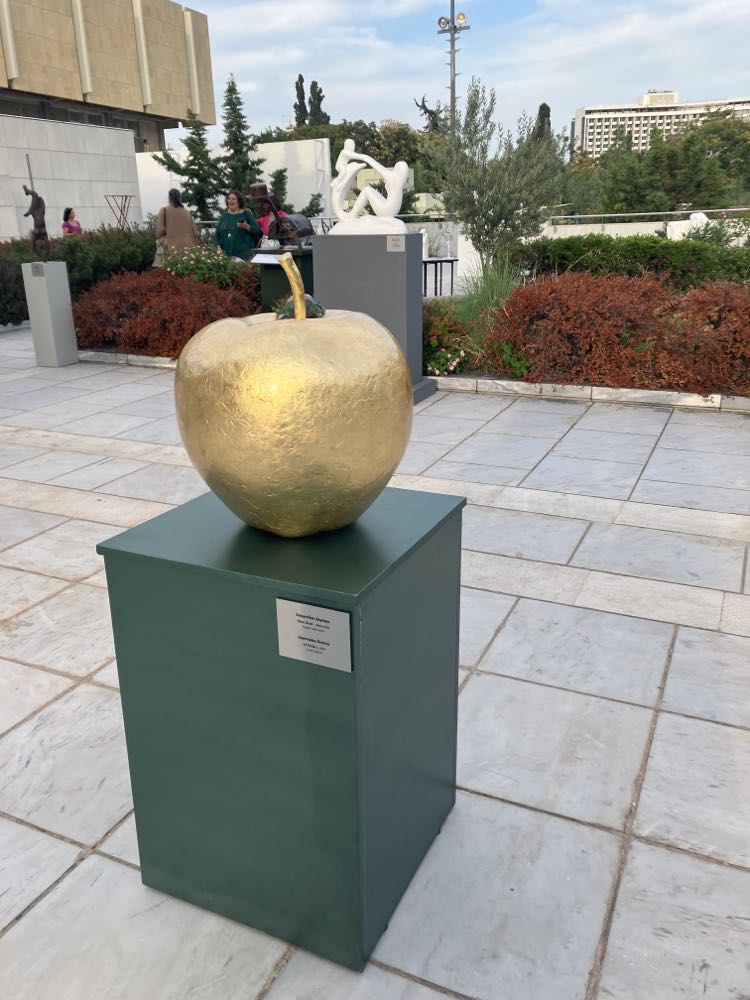
What are the next actions of the Chamber?
N.C. EETE is the collective body of visual artists representing thousands of members. The annual GA makes the decisions regarding its actions. Apart from workshops, seminars, and events, next year we are planning three exhibitions of engraving, and sculpture, as well as an exhibition of new members. It would be interesting to see the possibility of presenting the work of EETE members abroad, possibly in cooperation with similar institutions.
A.M. The opening of this Exhibition at the Byzantine Museum, which will be on view until November 5th came just after the Painting Symposium organized by the Chamber in collaboration with the Municipality of Patras, in honor of the writer Alki Zei, entitled A great walk of memory and dream in Patras 2023. The Sculpture Symposium was held at the same Municipality a year ago on Refugees and refugee memory.
Recently the “Month of Visual Arts Applications” (Part B) at the Municipal Gallery of Athens and the large exhibition Exodus – Diexodus 1922-2022 were organized at the Kapnergostasio along with other parallel actions.
The Chamber is always active with small or larger actions and important thematic, historical and anniversary exhibitions. I also need to point out that all these actions take place despite the difficulties that have intensified over time, such as the reluctance of public, municipal, and private bodies to allocate space for exhibitions and of course the lack of adequate resources to support a truly ambitious program to showcase contemporary cultural, artistic creation. We are currently planning an important Printmaking Exhibition in Distomo of Boeotia, a tribute to Street Art, a major Exhibition of Young Artists for which we are looking for a venue. All these projects come with parallel events.
A series of lectures and screenings are also underway at our venue in Valtetsiou Street, as well as infrastructure projects such as the promotion of our valuable archival material covering the 80 years of the operation of the Chamber. These activities are announced and approved by our General Assembly which will be held next month. We also hope for your help and support in promoting our future projects.
*Interview and all photos by Dora Trogadi. Images ©Greek News Agenda (Intro image, left: Stylianos Christofylakis, El derecho de vivir en paz. In memoriam Victor Jara, 2019, metal; right: Efi Funck, Female Figures, 2020, iron and oxidized parts)
Read also via Greek News Agenda: Byzantine and Christian Virtual Museum; Creative Greece | Kostis Georgiou: “Art’s purpose is to provide a zone of unlimited paths”; Creative Greece | George Petrides: “There is beauty not in spite of but because of imperfections”; Arts in Greece | Stephen Antonakos: The Greek-American Sculptor of Neon
TAGS: ARTS

